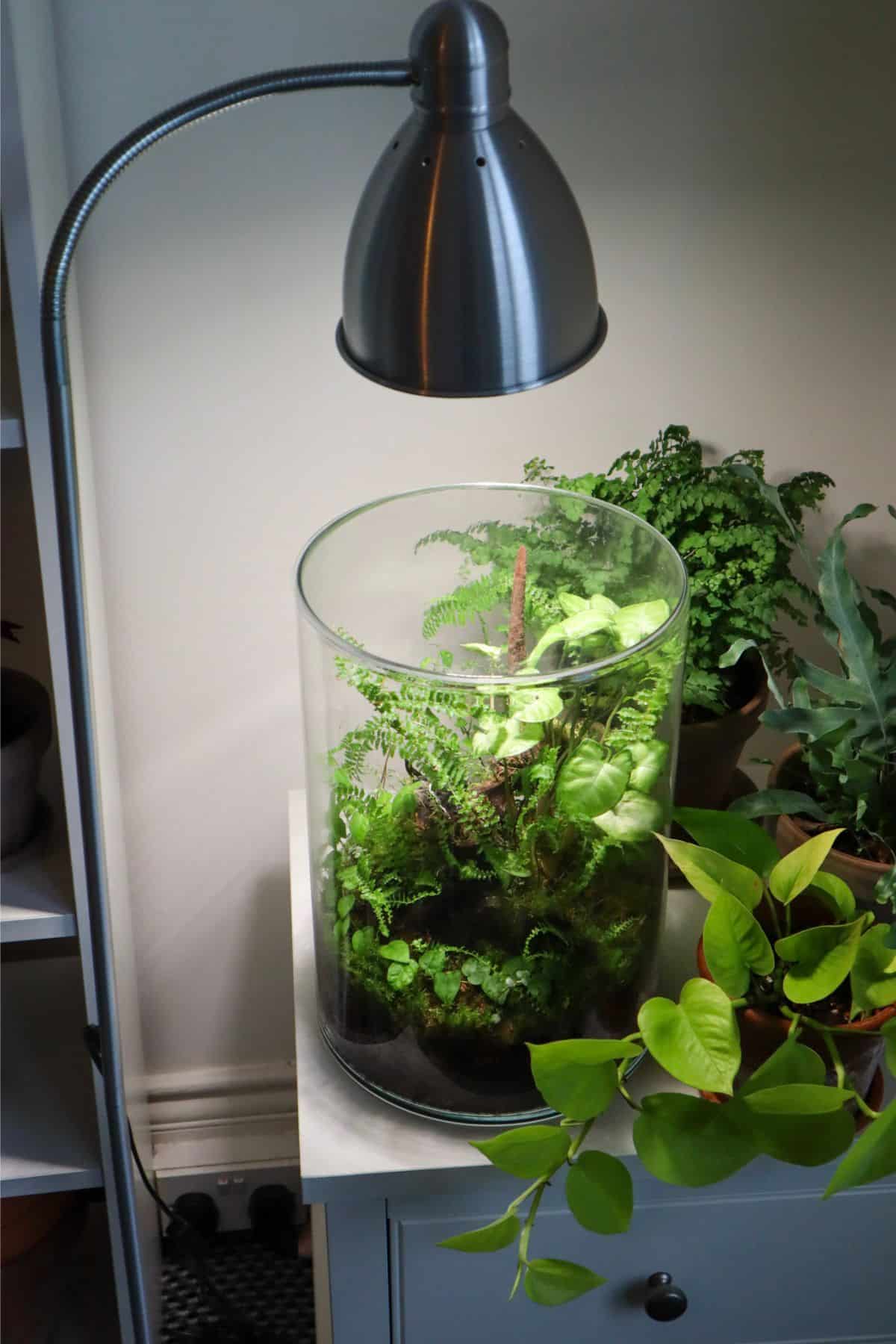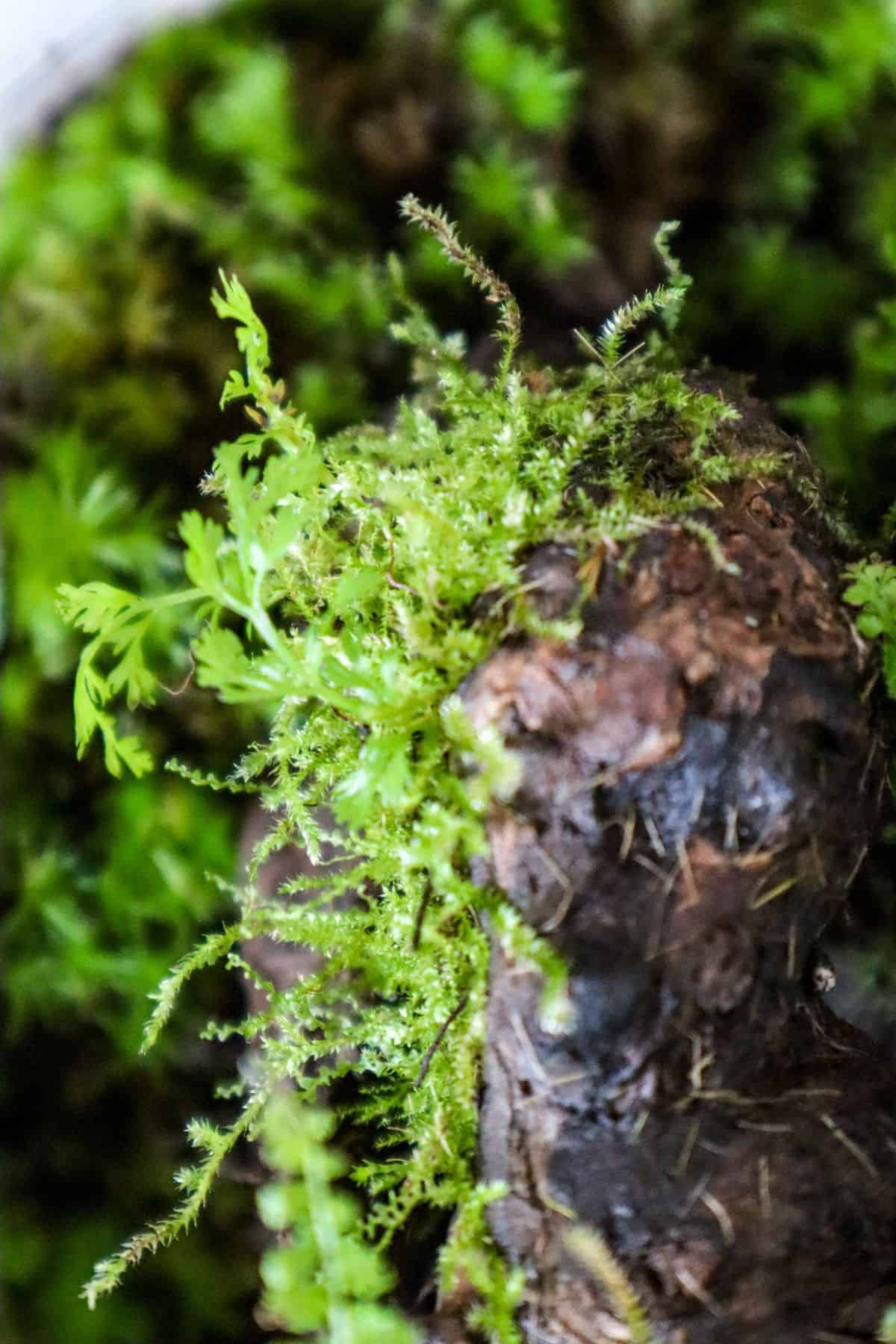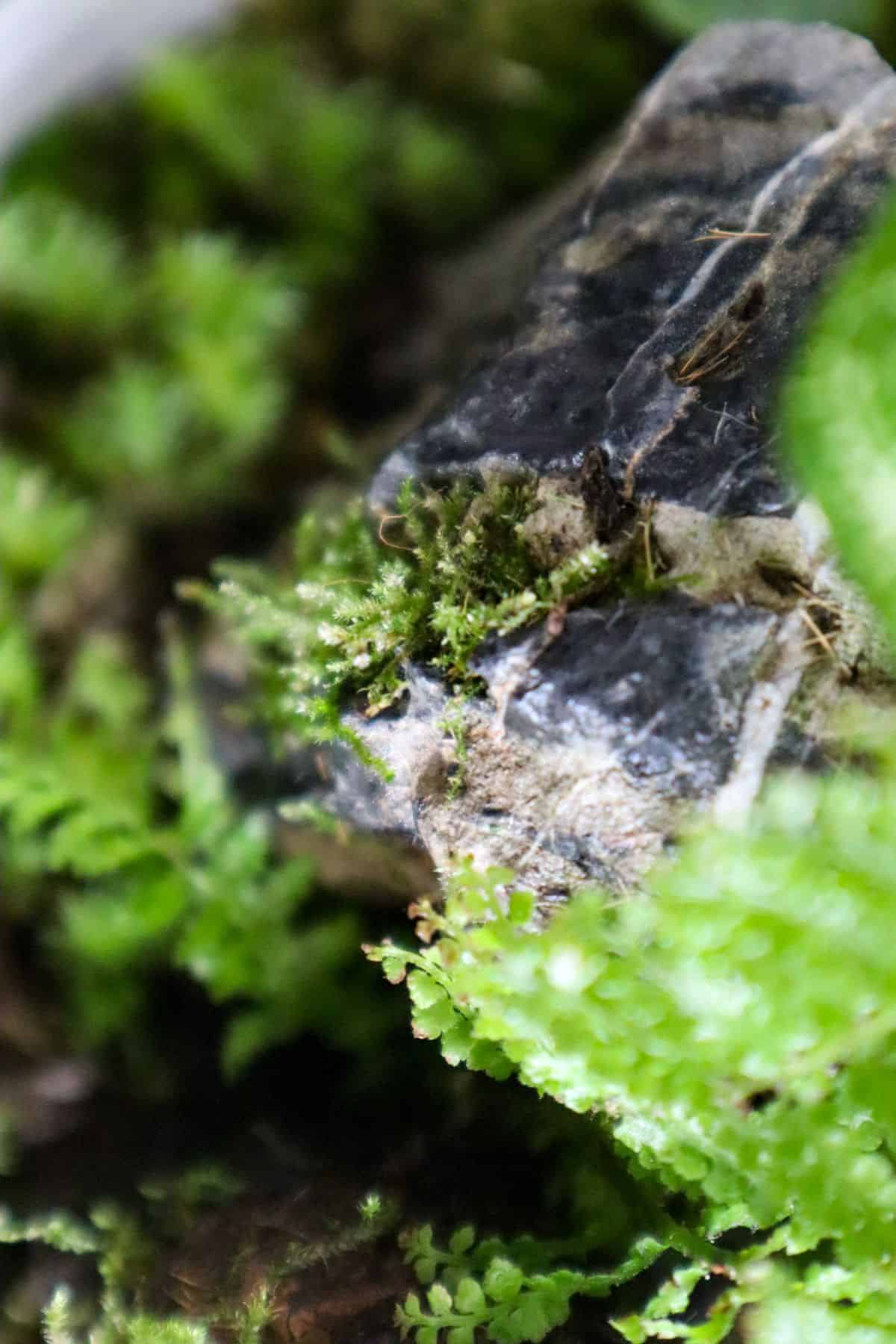Despite the festive name, Christmas Moss is very much a tropical species.
Widely found in the warm and humid Southeast Asian tropics; this adaptable moss can be grown fully submerged underwater, terrestrially on the land, or epiphytically on branches and rocks.
I guess with this moss, it really can be Christmas every day?
Though, Vesicularia montagnei actually gets its festive name from its characteristic leaf structure. Which sees the leaves branch out at 90° from the stem at regular intervals – just like a fir tree.
Thanks to its unique leaf and branch structure, this moss adds a substantial texture to a terrarium.
Get ready to “moss the halls” as we deep dive into this versatile species!

Where to Buy Christmas Moss
See the links below to purchase from reputable terrarium plant shops and marketplaces (may include affiliate links).
Christmas Moss Care & Growth
| Plant Type | Moss |
| Lighting | Low – high indirect light |
| Temperature | 70-90°F (21-32°C) |
| Watering | Regular, even moisture |
| Humidity | High humidity (80-100%) |
| Growth | 1-4 inches (usually less on land) |
Lighting Requirements
As with most mosses, Vesicularia montagnei grows best with bright, indirect light.
Direct sunlight risks drying out this moisture-sensitive moss and should be avoided at all costs.
That said, it still appreciates plenty of light. If you want optimum (and somewhat even) growth, then artificial lighting can be particularly helpful in providing maximum light with no risk.
It works well in aquariums, so there’s no reason it won’t work in terrariums too! (I use these inexpensive Sansi grow light bulbs).

Watering
When grown out of water, Christmas Moss must be kept moist at all times.
Did you expect any less of an aquatic plant?
This is particularly important during the acclimation period (the first few weeks after adding to a terrarium), where it’s extra sensitive to moisture.
If you don’t have a complete seal on your terrarium, you can mist it more regularly during this time.
When planting aquatic mosses epiphytically, I found it helpful to place chunks of Sphagnum Moss underneath. It’s much better at holding on to moisture and can act as a reservoir for your Christmas Moss to tap into when it needs it.
I’d also recommend using distilled or purified water to keep this moss happy (and stop streaks from forming on the terrarium glass).
Substrate
Honestly, this versatile moss will readily grow on just about any surface as long as it can find adequate moisture.
It’s commonly used as a carpeting plant in the aquarium hobby, and it can be used in this way for terrariums, too. If you’re using it this way, you’ll want a porous and water-retentive substrate.
That way, it can hold onto moisture and wick it up into the moss effectively.
I like to use coco coir as a base to provide that all-important moisture capacity and then use pumice as my porous element. The likes of akadama soil and horticultural charcoal can help, too.
👉 If in doubt, our tropical substrate mix is a well-balanced option.
As far as hardscape choices go for epiphytic planting, Lava Rock can have a similar wicking effect thanks to its high porosity. So that would be my go-to pick.

Temperature & Humidity
To thrive outside of water, Christmas Moss needs a warm temperature and very high humidity.
Humidity is particularly important for epiphytic mosses, as they rely heavily on drawing moisture from the atmosphere in order to stay hydrated.
Thankfully, closed terrariums are very good at achieving high humidity (close to 100% for complete seals).
In my experience, Christmas Moss can be quite challenging to grow in a closed terrarium with other plants because it needs so much more moisture. I found myself overwatering the whole terrarium, trying to mist the moss.

But that watering imbalance wouldn’t be a problem in a pure moss terrarium or in a tank-style tropical terrarium that gets regular misting (manually or otherwise).
How to Propagate Christmas Moss
Christmas Moss can be easily propagated through division.
You can separate the moss into smaller chunks by hand or even use scissors to trim it down into very small cuttings, which can be “pasted” onto a surface.
The growth rate of this creeping moss isn’t particularly fast on land, but it’ll eventually form a thick carpet once successfully acclimated to a terrestrial environment.
Varieties & Similar Plants
Java Moss (Taxiphyllum barbieri) was actually once classified as part of the same Vesicularia genus.
The fact that they are also very similar in growth and appearance means the two are often mistaken for each other.
Which should you choose for your project?
Java Moss and Christmas Moss both perform well, and your decision should come down to your use case and preference for growth pattern. Java Moss is more vertical, and Christmas Moss is more of a bushy carpet.
